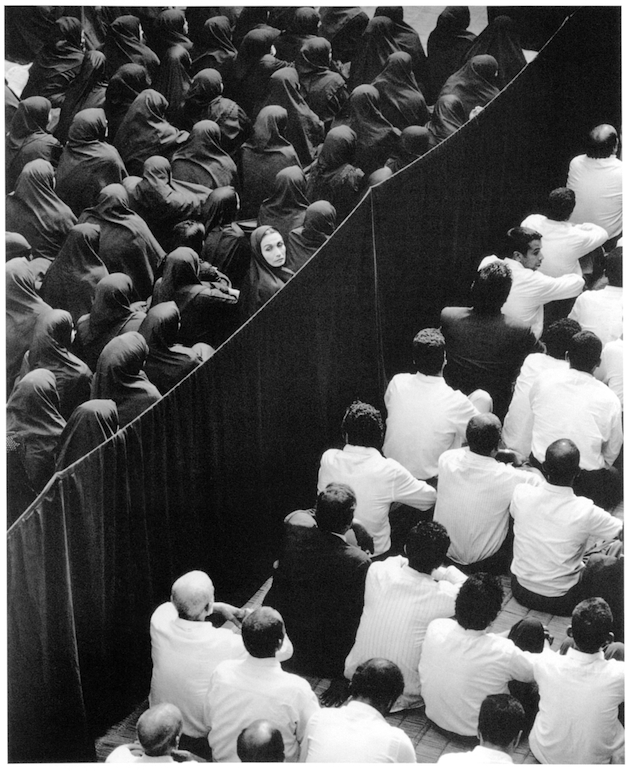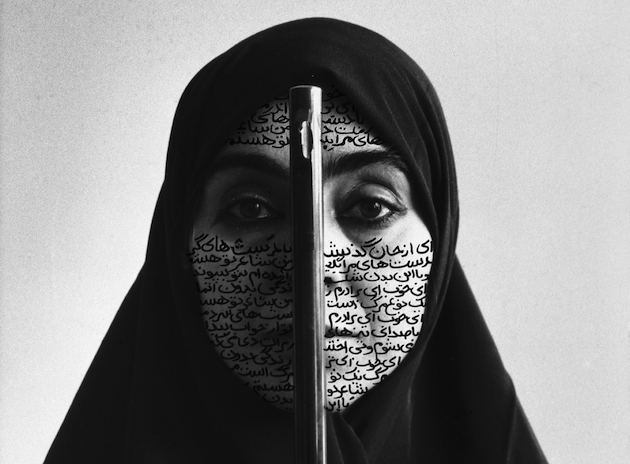
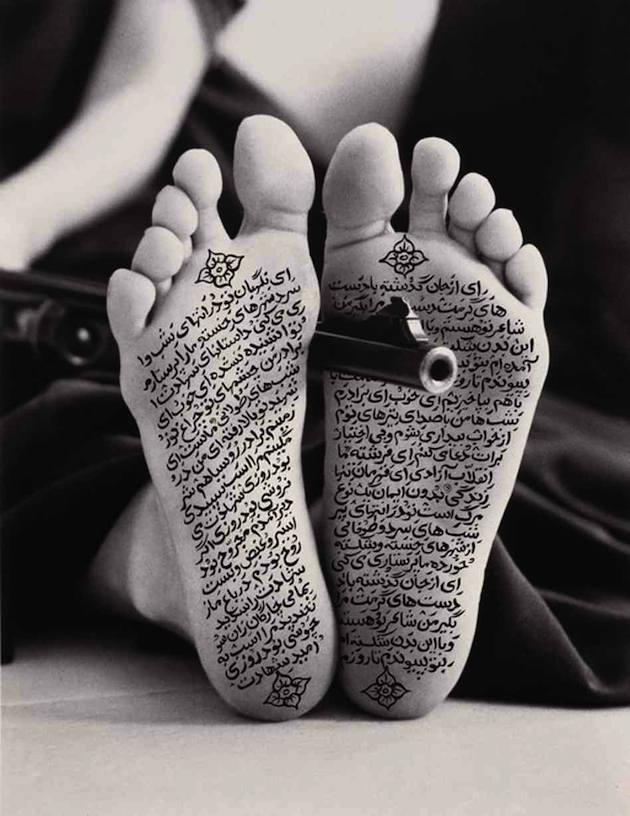
Shirin Neshat (b. 1957, Iran. She lives and works between her Iran and New York) is a visual artist who works with photography, calligraphy, poetry and filmmaking, recognised for her sharp and seductive way of depicting the Islamic culture and the Iranian world, examining their thorny narratives and issues. Neshat’s poetics unifies the pains of being an exiled Iranian woman, missing her family, and the experience of an artist grown and living in the Western world, humanly and conceptually tied to both situations. She is a kind of ambassador – or an interpreter – of different customs, who traces with an empathetic approach the relationships between diverse, often divergent, societies. Focusing on the role of women in the Islamic world, Neshat makes use of female subjects to tell us about their, and her own, socio-political battles; to point out women’s innate strength and to accept their weaknesses; to fight the stereotypes and reveal the importance of the essence of being. Her work goes beyond the established boundaries, stressing universal themes and values.
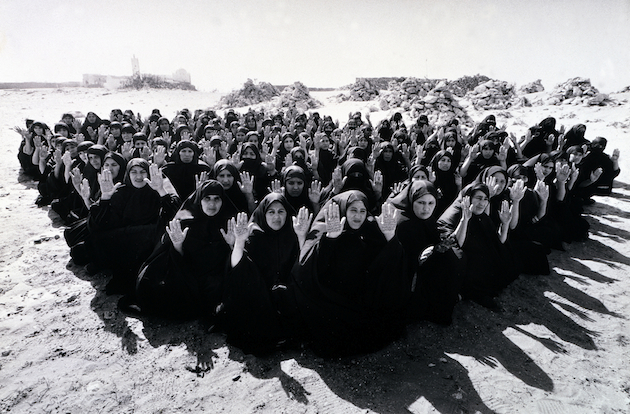
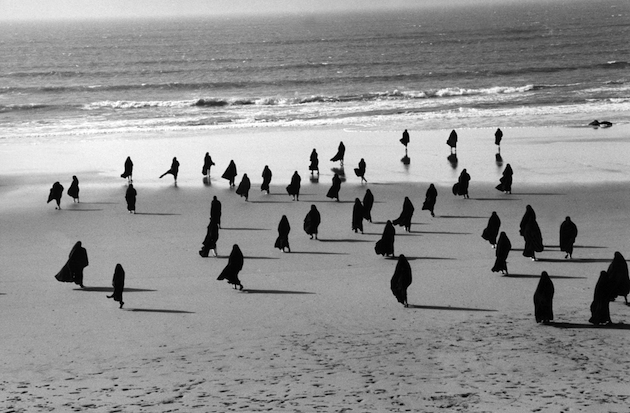
Thinking about Islamic women one cannot avoid noticing a sense of oppression but, at the same time, we also recognise their sensuality and even their eroticism hidden behind the veil. From the “Women of Allah” (1993-97) – black and white pictures of veiled women and close ups of parts of their bodies covered with lines of contemporary Iranian poetesses –, to the video installation “Turbulent and Rapture”, after which Neshat won the Golden Lion at the 48th Venice Art Biennale in 1999, getting to “Women without Man” (2009), Silver Lion at 66th at the Venice Film Biennale, the artists brings always into question the contrast between the religious devotion and political diligence of these women, their oppression, but also their reactions and natural instincts. What comes out are portraits, not just polemic discourses, of women, who capture attention for their capacity of making all these different elements coexist in a unique, coherent representation.
Shirin Neshat’s works are now on view at the Mathaf – Arab Museum of Modern Art with an exhibition entitled Afterwards, curated by Abdellah Karroum, which will run through February 15th 2015.
